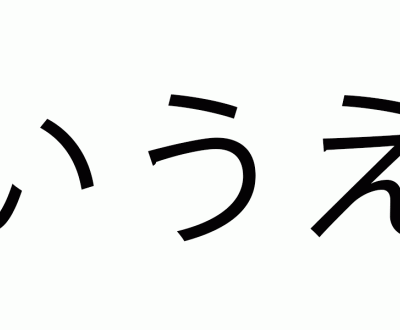Learn Japanese
The Japanese Language and Writing
The Japanese language is both attractive and mysterious, because of its double characters system : かな kana and 漢字 kanji. In the meantime, it questions us due to its distance from English's latin roots. Like in any other language not sharing any link with English, or just a few, and not functioning with the same alphabet, the Japanese language can leave you speechless!
And yet, learning this language is not as complicated as we can imagine. Indeed, for the writing, there will be a need to spend lots of hours to learn by heart in order to master the famous symbols. But the oral comprehension balances the exercice. Above all, learning Japanese is a fascinating dynamic which really deserves to to be considered.
A bit of History
The several Japanese populations have used their language for more than four thousands years, but they only started to write it during the IVth century, when they began to borrow the Chinese symbols, while modifying some of the pronunciations.
Since then, the Japanese writing naturally evolved a lot and underwent several major changes to modernize it during its History. The most important ones happened in 1945, 1981 and 2010. Today, it is a language made of Chinese and Japanese lettering.
General functioning
There are two main writing systems:
- the 2 x 46 kanas (ひらがな hiragana for Japanese words and カタカナ katakana for foreign words, without including their respectives derivatives) simple and essential but which can not be separated from the more complex lettering called...
- … the 2,136 kanjis (official 常用漢字 joyo kanji, but there would be about 50,000 according to some sources) which can be ideograms, pictograms, sinograms, phonograms, etc.
The kanji are composed of ”keys” (a few dozens in total) and their drawing follows precise orders and rules. Each of them represents an idea, and can be read differently (kun / on readings) depending on its function or its position. To be noticed: youngsters know less and less how to write kanji ; with computers and keyboards, they do not handwrite so much and you will often see Japanese checking the writing of a letter on their smartphone or computer.
Some simple rules
The Japanese language obeys precise rules and barely has irregularities, especially when we compare with latin / English languages:
- Different from other Asian languages, the Japanese is not a tonal language and its pronunciation is relatively easy to master (for example, 90% Japanese language sounds can be found in French while only 30% conversely!).
- There is not space between words. The reading is made from left to right but traditionally from top to bottom, and in this case, the columns are read from right to left.
- The language construction avoids pronouns and the verbs are generally located at the end of a sentence.
- There is no real conjugation but rather series of quite easy declinations, mostly related to temporal structures and levels of language.
Indeed, the Japanese involves precise politeness criteria (depending on age, gender, social status etc.) which modify not only the sentence’s structure, but the forms and declinations of the words. We also have to add the essential use of particles which articulate the several elements of a sentence. Without these particles, the Japanese would not exist.
Among this category are gathered all of our articles and information related to the learning of Japanese for a great start off and progress.


